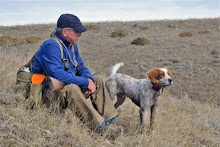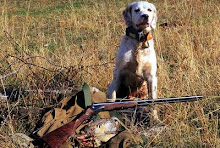I spent last weekend in the Inyo Mountains (California, east of the Sierras) hunting chukar and quail. Warm weather limited hunts to a few hours in the morning but the bird population was reasonble, generally a covey or two for each hour walked. Good times for man and dog.
Sadly, the ground that I was walking had been horribly overgrazed by wild horses. The rocky areas that were inaccessible to the horses had good grass cover but the open areas were nearly barren. Such a shame that a piece of high desert habitat, which should be a real jewel, was instead ruined by an invasive species. The wild horses and burros are now protected, thanks to the efforts of misguided psuedo-environmentalists, and they compete strongly with native species such as the desert bighorn. Of course chukar are also non-native so perhaps I am not being entirely consistent ... but chukar do not seem to impact the environment to any measurable degree.
While camped in the area I met a group of buddies who had been hunting chukar together for a couple of decades. Nice guys, and clearly understood where to find chukar. However, none of them used pointing dogs, and with my two setters I was getting into a LOT more birds than they were. Interesting to have the difference in canine support illustrated this strongly.
Redtail
17 hours ago









1 comment:
Pete: yeup, it is something of a paradox that two of the major hunting species (chukar + pheasant), both of which can now maintain 'native' 'wild' populations, are in fact exotic. At least in the northeast, we worry less about horses as an invasive species, and more about turkey moving into new territory and upsetting ground-nesting birds like grouse.
Nothing quite as dramatic to report from here, although we have started to see woodcock move through -- did manage to claim one this morning.
best
Andrew
Post a Comment